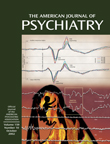This volume consists of nine papers presented in Spain in 1999 at the Fourth International Meeting on the Biology and Sociology of Violence. They represent the work of the two editors and six others, including psychologists, criminologists, and a neurologist. Together, these authors cite the literature more than 600 times. There are four chapters on the phenomenon of psychopathy, three on serial killers, one on psychosocial contributions to psychopathy and violence, and one on treatment.
Robert D. Hare’s contribution is titled “Psychopaths and Their Nature: Some Implications for Understanding Human Predatory Violence.” Hare is a prominent expert on psychopathy and devised the Psychopathy Checklist, which consists of 20 measures by which to evaluate violent patients who meet the DSM-IV criteria for antisocial personality disorder (p. 9) and is an important component in the Violence Risk Assessment Guide
(1).
A chapter on brain imaging examines the evidence from positron emission tomography scans of differences in the brains, particularly in the prefrontal cortex, of types of murderers; for example, the predatory killer compared with the psychotic killer compared with the normal individual. One chapter on the emotional processes in psychopathy describes research methods using the “startle probe,” an objective means of evaluating differences in emotional reactivity in individuals to test the theory that psychopaths are violent, intimidating, manipulative, and lack empathy in part because they have a “weak defensive activation system” in their brain (p. 72). A chapter on neurobiology explores the possibility that the psychopathic brain differs from others in its structure because of noxious influences prenatally and in early childhood.
The first of the three chapters devoted to serial killers, on the concept and history, focuses on differences between serial killers who are psychotic and disorganized and those who are psychopathic and organized. I would have appreciated knowing the credentials of the author, who is associated with a center for the study of violence in Spain. A chapter on the motives of the serial killer is by a criminologist. The third chapter in this section addresses the interrelationships of psychopathy, sadism, and serial killing. The author, whose qualifications are not given, argues for the concept of sadistic personality disorder, which is not in the DSM system, although sexual sadism is.
The chapter on psychosocial contributions reviews literature that reports experiments done with infants and children in order to measure the effects of parenting and related experiences on some of the traits that may characterize future sociopaths. This author also discusses his “construct theory” (pp. 157–161); his view is that children acquire their motives as they learn language. Motives, he contends, do not require instinctual drives or wants. He views the putative links between drives and motives as “obfuscating fictions.”
Lastly, there is the matter of treatment. Is it possible? The short answer is no, but the author of the chapter on treatment, a German psychologist, after reviewing the record of attempts to treat psychopaths with medications and various psychosocial interventions, tells us what he thinks may work if only we can arrange it. He lists and discusses 15 principles to which a reasonably promising program would need to adhere.

